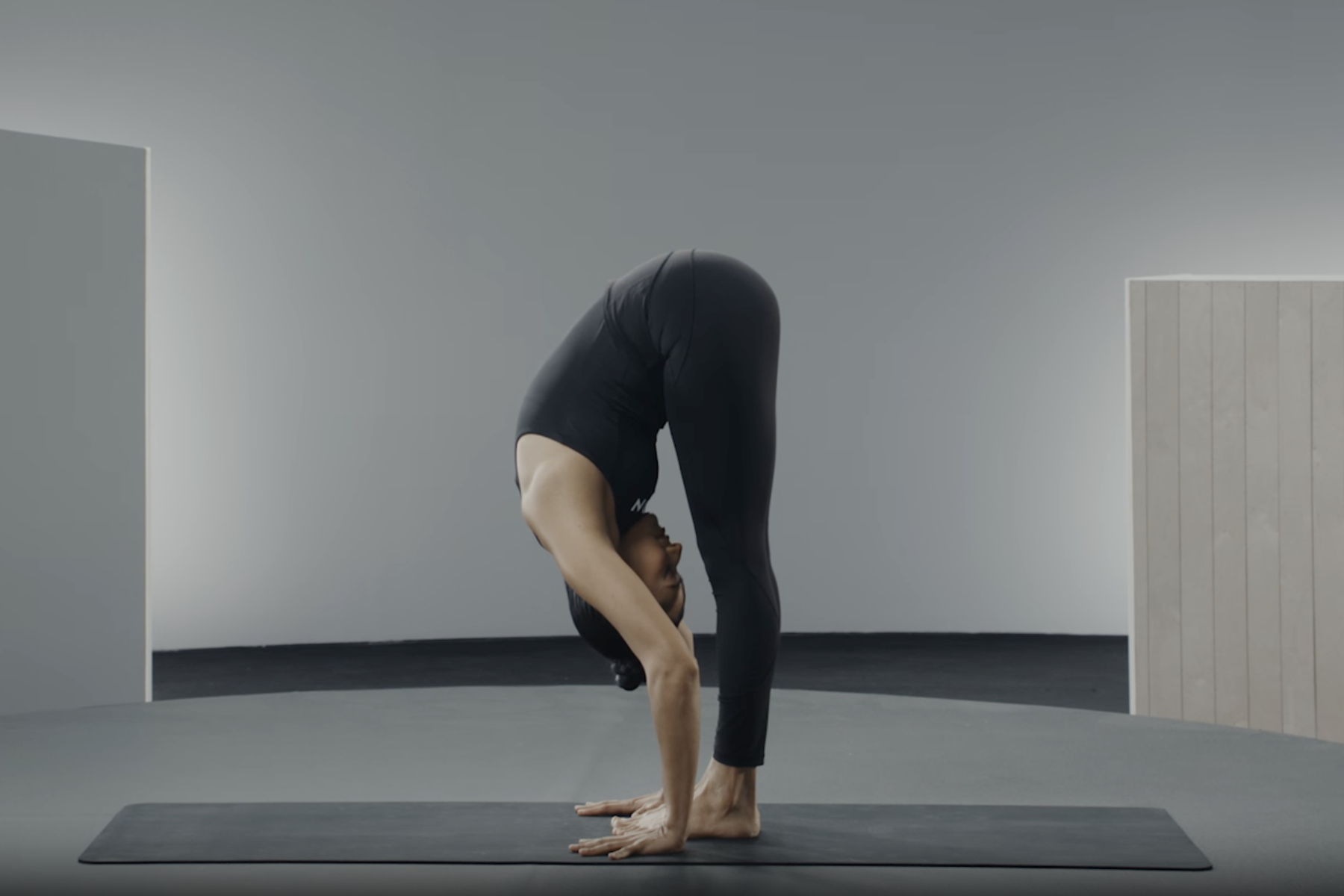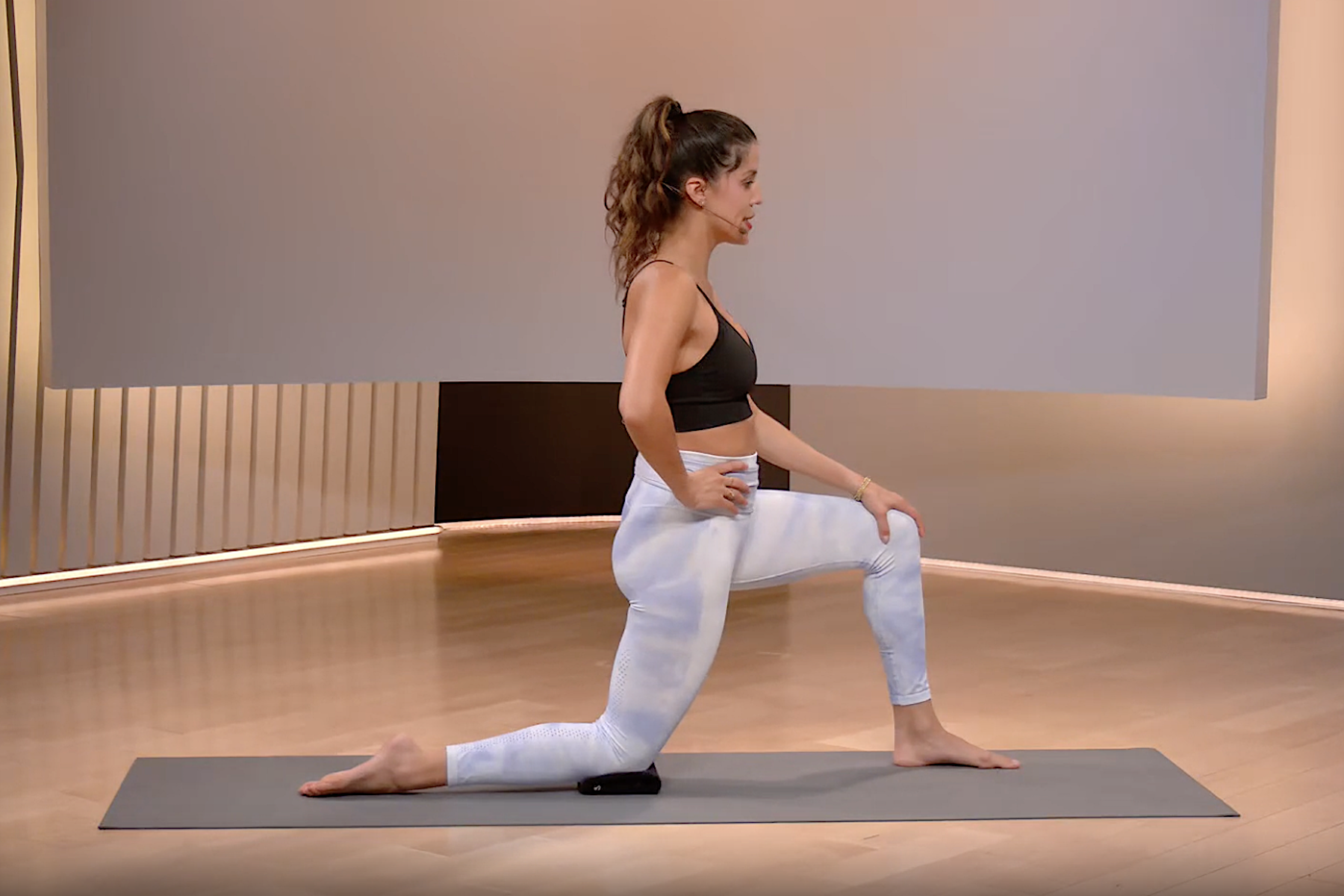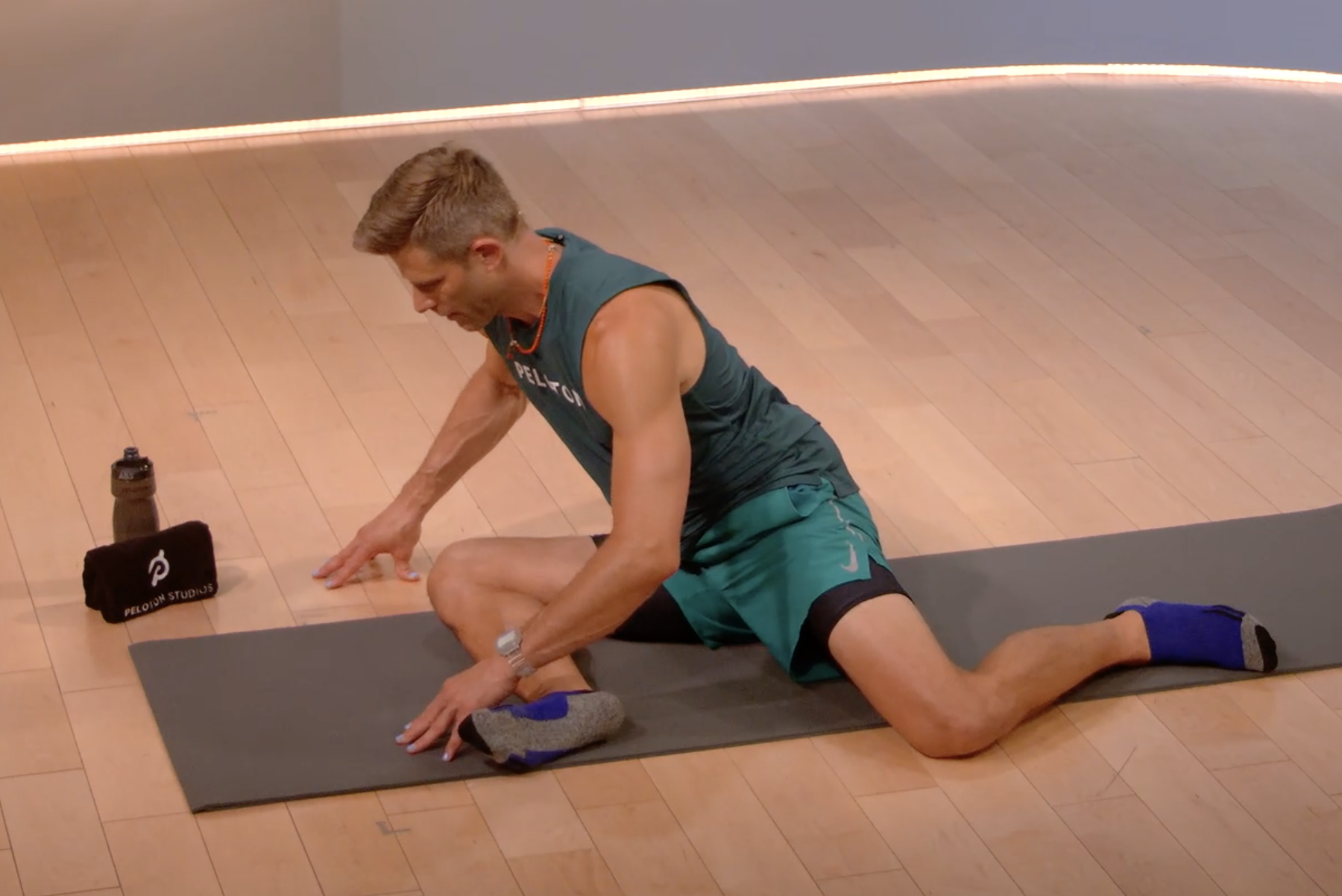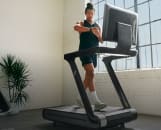
Halfpoint Images/Moment via Getty Images
A Beginner’s Guide to Stretching and Flexibility—Plus the 11 Best Stretches to Try
New to stretching? Here's where to start.
By Karen Asp, Sarah Klein•
The Benefits of Stretching for Beginners
How Do You Start Stretching?
11 Best Stretches for Beginners
The Different Types of Stretching, Explained
When Is the Best Time to Stretch?
Common Stretching Mistakes to Avoid
Stretching isn’t exactly a headline grabber when it comes to working out. Health organizations such as the WHO recommend you do 150 minutes of cardio per week, and we know that strength training can make your muscles stronger (among other benefits). But stretching doesn’t always have the same appeal, hence the reason you might be tempted to skip it.
Not so fast. Stretching (even for beginners) is an important tool in your physical activity toolbox for improving mobility and flexibility and enabling your body to do your (more exciting) cardio and strength training workouts. Follow the guide below to learn all the ins and outs of stretching.
The Benefits of Stretching for Beginners
No doubt you’ve heard that stretching increases your flexibility, but why does that matter? Turns out, it’s not just about your performance in your workouts; flexibility is important in daily life, too. “Lack of flexibility can lead to mobility limitations, which means your body is no longer able to move naturally,” says Peloton instructor Marcel Maurer. “Flexibility, along with agility, helps make movements in daily life better.”
Plus, if you want to keep your workouts going, you obviously want to avoid injury, which is yet another reason not to skimp on stretching. When you hold stretches, you’re lengthening your muscles. That’s especially crucial after a workout, as your muscles contract or shorten during movements, and “if your muscles are shortened, your body can’t make movements correctly,” Marcel says. As a result, you’ll move incorrectly, forcing other muscles to compensate. Because those muscles aren’t used to working that way, they could get injured.
Stretching can also help alleviate muscle imbalances in the body. These imbalances have numerous causes, including sitting too much and being under chronic stress, Marcel says.
All of this explains why Marcel always spends 30 seconds stretching each muscle after a workout. “The focus is on reducing muscular imbalances, supporting correct movement execution, and preventing injuries,” he says.

Peloton App
Access thousands of classes with no equipment needed.
How Do You Start Stretching?
If you haven’t stretched much, it can be tough to know how to begin. You might even be intimidated, especially if you think you’re not that flexible.
That’s why starting small is best. Slot in time for a five- or 10-minute stretch session a few times a week, Marcel says. As you get more comfortable with stretching and realize how good it makes you feel, you might then stretch for longer time periods. You should also stretch before and after your workout; see below for the type of stretching that’s best. And don’t forget you can find all sorts of beginner-friendly stretching routines to follow along with on the Peloton App, including pre- and post-ride stretching, pre- and post-run stretches, full body, lower body, and upper body stretches, and more.
11 Best Stretches for Beginners
Although you can take a live or on-demand Peloton stretch class, you can also get started with these basic stretches from Marcel and Peloton instructor Erik Jäger any time you want to unwind.
Just make sure you don’t feel pain while stretching. You’ll probably feel a little discomfort in particularly tight parts of your body. But stretching shouldn't hurt, so if you feel pain, pull back.

1. Standing Quadriceps and Hip Flexor Stretch
Release the muscles in the front of your leg with this stretch that does double-duty, tackling your quad and hip flexor. This stretch is particularly great for runners and cyclists, as both activities require repetitive use of the quads.
1. Stand with your feet hip-width apart and shift your weight into your left foot.
2. Keeping your knees next to each other, lift your right foot behind you.
3. Grab the top of your right foot with your right hand and place your left hand on a wall or chair if you need to balance.
4. With your right knee pointed toward the floor, pull that foot toward your butt until you feel a deep stretch in your right quad and hip flexor. Hold for 30 seconds.
5. Release and repeat on the other side.

2. Forward Fold
Tight hamstrings are common if you sit for extended periods, so adding hamstring stretches to your flexibility routine can help you relieve tension.
1. Stand with your feet hip-width apart, arms by your sides.
2. Fold forward from your hips (keep them stacked over your ankles) and reach your hands toward the floor.
3. Touch your knees, shins, or ankles, whatever is possible for your flexibility. Fold forward as far as you can without bending your knees too much.
4. Hold for 30 seconds.

3. Cat Cow
Cat Cow is a yoga pose that doubles as an incredible stretch for the spine, abdominals, and hips. It also helps to stretch parts of the upper back, including the trapezius muscles, shoulders, and neck.
1. Start on all fours, with your wrists below your shoulders, fingers forward, and knees under your hips.
2. Inhale and arch your back for Cow Pose.
3. As you exhale, round your back for Cat Pose.
4. Continue alternating for 30 seconds.

4. Shoulder Stretch
The cross-body shoulder stretch is one of the best upper body stretches to have in your toolkit. It can easily be done seated as well as standing, so you can even sneak it in during your work day.
1. Stand with your feet hip-width apart.
2. Lift your right arm across your chest, hooking your left arm around it above your right elbow.
3. Use your left arm to draw the right arm toward your chest so you feel a stretch in your right shoulder. Hold for 30 seconds.
4. Release and repeat on the other side.

5. Kneeling Hip Flexor Stretch
Running, cycling, and sitting for long periods of time can contribute to tight hip flexors. This hip flexor stretch will help you release the muscles at the front of your hip.
1. Kneel on the floor on your left knee. Bend your right knee at 90 degrees with your right foot planted in front of you.
2. Shift your weight forward. You should feel the stretch in your left hip and thigh.
3. Hold for 30 seconds. Then, switch legs.

6. Seated Adductor Stretch
Sometimes called a butterfly stretch, your tight hips will thank you for incorporating this seated stretch into your routine. As you advance, you can add a forward fold to this stretch by hinging at the hips as you exhale and bringing your chest forward while maintaining a long spine.
1. Sit upright on the floor.
2. Bring the soles of your feet together in front of you, pulling them in as close to your body as is comfortable.
3. Sit tall with your spine straight and core gently engaged.
4. Let your knees fall toward the floor naturally (no need to press them down).
5. Hold for at least 60 seconds, focusing on releasing tension with each exhale.

7. 90/90 Stretch
The 90/90 stretch targets your hip flexors, glutes, and external rotators to improve hip mobility.
1. Sit on the floor with your right leg in front of you, bent at 90 degrees at the knee.
2. Position your left leg out to the side, also bent at 90 degrees.
3. Rotate your torso so your chest is facing over your right shin.
4. Keep a straight spine and slowly hinge forward from your hips.
5. Inhale to lengthen the spine, and exhale to deepen the fold.
6. Hold for 45 to 60 seconds, then switch to the other side.
8. Calf Stretch With Door Frame
For this standing calf stretch, grab a wall or other sturdy surface to lean against. This stretch is particularly good for runners to incorporate into a post-run stretching routine.
1. Place the toes of one foot up against a door frame, wall, or other vertical surface with your heel resting on the floor.
2. Step the other leg slightly behind you.
3. Slowly lean forward, pressing your hips toward the wall while keeping your back leg straight. Keep your chest lifted and spine long.
4. Hold for 45 to 60 seconds, then switch sides.

9. Forearm Stretch on All Fours
If you spend a lot of time typing throughout your day, this stretch can feel great when you get home at night, or as part of a bedtime stretch routine.
1. Start on your hands and knees on the floor.
2. Rotate one hand so your fingertips point toward your knees.
3. Keep your elbow slightly bent to avoid overextension.
4. Very slowly start shifting your weight back toward your heels. Stop when you feel a gentle stretch along the underside of your forearm.
5. Breathe deeply and hold this position for at least 45 seconds, gradually increasing if it's comfortable.
6. Switch sides and repeat.
10. Standing Lat Stretch
Whether your back feels tight after a workout or potentially from poor posture throughout the day, your latissimus dorsi, the muscles across your middle and lower back, could be the culprit. Lat stretches, like the one below, can help you get relief.
1. Stand in front of a chair, countertop, or other surface of a similar height.
2. Place your hands on the surface and bend at the waist. Press your chest down toward the ground. Keep your core engaged to avoid arching your back. You should feel the stretch along the sides of your ribs.
3. Hold for 30 seconds.

11. Upper Trap Stretch
This seated trap stretch will help to release your upper trapezius, which can commonly feel tense from poor posture and stress.
1. Sit or stand up tall, with your shoulders down and back.
2. Place your right hand on top of your head, gently pulling your right ear toward your right shoulder. You should feel the stretch on the left side of your neck.
3. Hold for 30 seconds, then repeat on the other side.
The Different Types of Stretching, Explained
Stretches tend to get lumped into one category. Yet there are two main types of stretches—dynamic versus static—each with their own benefits.
Dynamic stretching involves moving your body to prepare for exercise. This type of stretching is best done before a workout. Common exercises include walking lunges, hip circles, arm circles, and leg pendulums.
Static stretching, on the other hand, involves holding stationary positions, usually for 30 seconds. For instance, you might do a standing quadriceps stretch or a hamstring stretch. With these stretches, you’re lengthening muscles that have contracted during your workout and releasing tension. That’s why it’s best to save static stretches for after your workout, Marcel says.
When Is the Best Time to Stretch?
This is a question everybody asks, but for the record, there is no bad time to stretch. You might, for instance, take stretch breaks throughout the day if you’ve been sitting too long and feel your muscles getting achy. Maybe you want to stretch before you go to sleep or even in the morning before you get out of bed.
You can also plan to stretch before and after your workouts, but the type of stretching you do will vary for each, Marcel says. Before your workout, focus on dynamic exercises—think arm circles, side leg swings and bodyweight squats, while you should do static stretching after your workout, according to the National Academy of Sports Medicine.
Should You Stretch Every Day?
You certainly can stretch every day, if that fits into your schedule and feels good for your body. Daily stretching can help you build flexibility, ward off injuries, and bust stress. But don’t feel like you have to stretch that regularly. When it comes to exactly how often to stretch, experts say it’s most important before and after your workouts.
Common Stretching Mistakes to Avoid
It’s easy to make mistakes whenever you start a new activity, stretching included. Yet those mistakes could put you at risk of injury. Here are two to avoid when stretching:
Overstretching: Stretching can be uncomfortable at first. But if you push past that discomfort so you wind up feeling pain, you’ve overstretched. That could put you at risk of injury. If you think of pain on a scale of one to 10 (10 being the most painful), you shouldn’t be higher than a six when you’re stretching safely, Marcel says.
Doing static stretches before a workout: Static stretches cause your muscles to relax, which is the opposite of what you’re trying to do in your warm-up. Instead, do them after your workout, Marcel says.
This content is for informational and educational purposes only and does not constitute individualized advice. It is not intended to replace professional medical evaluation, diagnosis, or treatment. Seek the advice of your physician for questions you may have regarding your health or a medical condition. If you are having a medical emergency, call your physician or 911 immediately.
Level up your inbox.
Subscribe for a weekly dose of fitness, plus the latest promos, launches, and events.
By providing your email address, you agree to receive marketing communications from Peloton.
For more about how we use your information, see our Privacy Policy.










